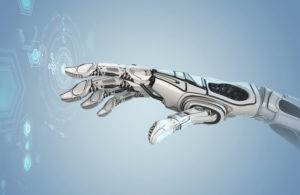Agile, Waterfall, Or Rad
Content
RAD is often compared with the waterfall model as it was developed to overcome the challenges posed by the waterfall model. RAD promises faster development, adaptability, client satisfaction, and continuous delivery. On the contrary, the waterfall model is about meticulous planning and sticking to the timeline. Rapid application development follows a continuous iteration process that enables developers to respond to customer feedback and requests during the development process. The Rapid Application Development framework enables software developers to develop and deploy quality apps and software quickly.

The five lean principles provide a workflow that teams use to identify waste and refine processes. Lean is also a guiding mindset that can help people work more efficiently, productively, and effectively. Lean software development comes from the principles of lean manufacturing. At its core, lean development strives to improve efficiency by eliminating waste. By reducing tasks and activities that don’t add real value, team members can work at optimal efficiency.
What Are The Cons Of Rapid Application Development Rad?
Let’s take a look at an example of a team that applied RAD development methodology to their work, and won — big time. However, if your team is tasked with advantages of rad building mission-critical software (flight controls, implant firmware, etc.), the RAD methodology is not only inappropriate, but also irresponsible.
RAD model distributes the analysis, design, build and test phases into a series of 5 short, iterative development cycles. Rapise is the most powerful and flexible automated testing tool on the market. The idea of RAD is to build a functioning prototype which the stakeholders can use to visualize the intended functionality. This prototype is then successively improved to eventually become a robust application that meets the intended functionality. With agile software development, the requirements for the project do not have to be codified upfront, instead they are prioritized and scheduled for each iteration.
The Top 7 Popular Agile Development Approaches
Build applications visually with powerful components, create modern responsive interfaces, and design interfaces easily using out-of-the-box widgets, templates and themes. The other issues cited above present special challenges when using a RAD approach for very large scale systems. In modern Information Technology SSH operations environments, many systems are now built using some degree of Rapid Application Development . In addition to Martin’s method, agile methods and the Rational Unified Process are often used for RAD development. Stakeholders can discuss and address code vulnerabilities while keeping development processes going.
Simply put, it’s difficult to keep a large group of people on the same page when your story is constantly changing. Commitment In waterfall, the client spent most of their time apart from the development team after completing specifications. This allowed clients to focus on their primary tasks and developers to focus on building. In rapid application environment, the frequent cycle of prototypes requires developers and clients to commit to frequent meetings that, on the outset, may appear to consume unnecessary cycles.
It is also the best model to choose when there are going to be changes made to the prototype throughout the process before the final product is completed. RAD is a type of software development that does not dedicate a lot of time or resources on planning and instead uses a method of prototyping to introduce the product. Easily integrate with your database, API ecosystem or any systems of record. Generate readable code that you can own and modify in future with no lock-in.
- In RAD, the primary focus is to get something usable in front of the client as quickly as possible to get feedback.
- RAD is a predecessor of Agile, but Agile encompasses far more than a development model.
- Hence organizations who do not have well established Agile models usually prefer RAD as their ideal development model.
- The main benefit of RAD development is the vision of treating our software projects like clay, rather than steel.
- If your project is large enough to divide it into Sprints, consider agile methodology.
In this rapid application development phase, the developer’s goal is to build something that they can demonstrate to the client. This can be a prototype that satisfies all or only a portion of requirements . In case of RAD (which I’m not experienced with) vs. Agile it seems only commonality is iterative development. RAD seems to prefer rigid phases with specific goals and outputs. Agile is more about single development phase where everything happens. Also Agile develops software directly with possibility of features being removed instead of prototyping beforehand. I don’t think it is correct to categorize development methodologies in hiearchies.
One Thought On agile, Waterfall, Or Rad: Which Methodology Is Best For Your App Development?
RAD takes the analysis, design, build and test phases and repeatedly iterates through them developing prototypes and versions of increasing functionality. The source of many popular agile practices, and the key founding method.

In fact, you may have to persuade them to abandon the early models and start from scratch. Thus, when users approve this design, they are signing off on a visual model representation, not just a conceptual design represented on paper, as is traditionally the case. It’s more common to see the waterfall method used for project management rather than product development. At the beginning of a project, project managers gather all of the necessary information and use it to make an informed plan of action up front.
The spiral model, developed by Barry Boehm, is the first RAD alternative to plan-based approaches. This model emphasizes developing prototypes rather than having strict design specifications. Prototypes are advantageous because using them reduces risk and prototypes can be adapted to become working models. Early on in the testing phases, prototypes can test the riskiest parts of the system, providing valuable information to the design team.
Get the Job Done with These 7 Great Software Development Methodologies – Interesting Engineering
Get the Job Done with These 7 Great Software Development Methodologies.
Posted: Mon, 20 Jul 2020 07:00:00 GMT [source]
In search of agility and quality in software development, there are methodologies that are capable of enhancing the performance of the professionals involved in its processes. Educate your users so they know that early prototypes are only for generating useful feedback and uncovering the “unknown unknowns.” They don’t represent what the final product will become. DSDM provides project governance and scaling around XP or RAD approaches. It has three main phases called pre-project, project, and post-project and includes defined formal stages within the project phase. Fitness for Business Purpose is the primary criterion for delivery and acceptance of a system and MoSCoW is used for prioritization. Agile performs testing concurrently with software development whereas in Waterfall methodology testing comes after the “Build” phase. Traditional, linear management methods, such as the waterfall method we’ll cover below, are like classical music, led by one conductor who has a set plan for how the music should be played.
The James Martin Rad Method
The overall concept behind this methodology is to treat software projects like clay, rather than steel. Today, the use of RAD is quickly becoming a necessity, thanks to the volatile market conditions and competitive marketplace. The Rapid Application Development approach relies on rapid cycles of iterative development, prototyping, reiterative user testing and the re-use of software components.

Although this is addressed in other methods, DSDM strongly believes in commitment to the project to ensure a successful outcome. The variables in the development are not time/resources, but the requirements. This approach ensures the main goals of DSDM, namely to stay within the deadline and the budget. They all prioritise requirements and work though them iteratively, building a system or product in increments. We want to help developers extend and customize our tools to fit in with their needs.
What is the ideal #methodology for your #appdevelopment? Learn in this blog about Rapid Application Development #RAD vs #Agile. https://t.co/WQL7L0fc0e @shanselman @AltSchoolAfrica @lukOlejnik @debraruh @JosephSteinberg #software #development #business #digitaltransformation
— WisdomPlexus (@wisdomplexus) December 5, 2021
Since the client provides feedback at every step of development, the result is software that meets the client’s expectations. In the cutover stage, you need to work out data conversion and the change from the existing system to the new system, test the product, and train its users. Every project, irrespective of the framework, has to start with the gathering of requirements. The clients present what they expect the software to do and the features that should be there. RAD enables developers to work on various independent prototypes parallelly. These are all integrated in the end to create a complete software product.
Agile vs RAD vs Waterfall: App Development Methodologies Comparedhttps://t.co/Pgylnu0k7v#agile #RAD #Waterfall #appdevelopment #methodoloies #hopinfirst
— HopinFirst (@hopinfirst) June 6, 2020
These waterfall methods were based on traditional engineering models that were used in construction. A problem and how it is solved can be changed dramatically by one software or another.
